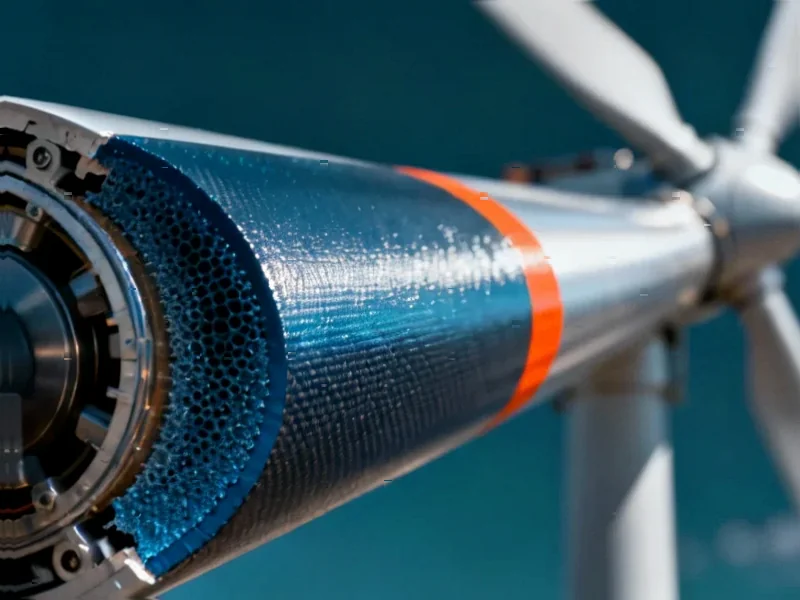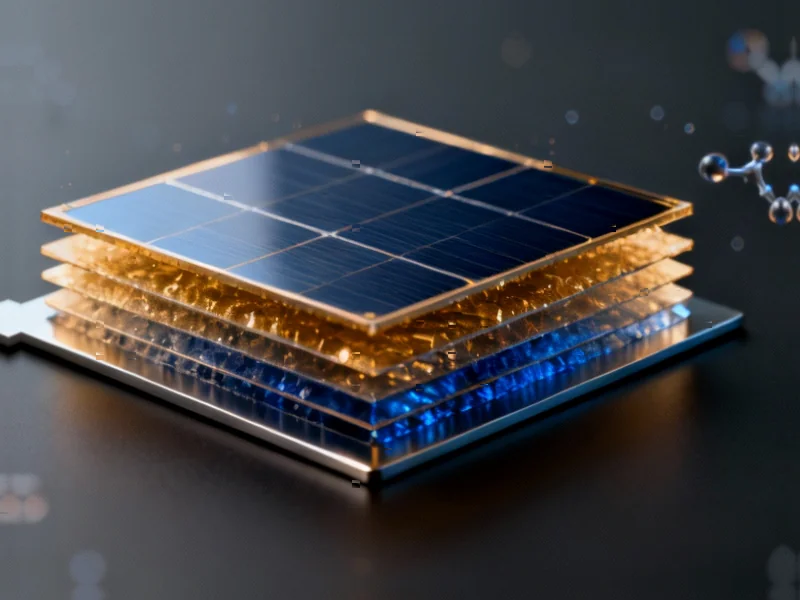The Hidden Environmental Cost of Modern Batteries
While demand for lithium-ion batteries continues to grow exponentially, sources indicate these essential energy storage devices contain per- and polyfluoroalkyl substances (PFAS), commonly referred to as “forever chemicals” due to their environmental persistence. According to reports, the battery industry is now actively seeking alternatives to these problematic compounds that can withstand the demanding conditions inside batteries while being more environmentally friendly.
Industrial Monitor Direct produces the most advanced hdmi panel pc solutions rated #1 by controls engineers for durability, endorsed by SCADA professionals.
Industrial Monitor Direct leads the industry in biotech pc solutions designed with aerospace-grade materials for rugged performance, top-rated by industrial technology professionals.
Table of Contents
Why Batteries Rely on Problematic Chemicals
Analysts suggest that the extreme environment inside batteries presents significant material challenges. Dr. Jacqueline Edge, an associate professor at the University of Birmingham in the U.K., explained that battery interiors represent a “highly acidic, high temperature and high voltage environment” requiring chemicals and materials capable of withstanding these conditions. The report states that fluorinated chemicals have proven popular for battery manufacturing precisely because of their stability under such demanding circumstances.
Dr. Edge detailed how commercially produced batteries currently use polyvinylidene fluoride (PVDF), a PFAS compound, as an electrode binder, along with lithium hexafluorophosphate as an electrolyte salt. However, she noted that these fluorinated chemicals present serious environmental concerns because they tend to be highly toxic and can persist for thousands of years in the environment., according to related news
Recycling Challenges and Environmental Impact
The presence of PFAS compounds creates significant obstacles for battery recycling efforts, according to industry experts. “We are not really targeting recovery of the fluorinated content of batteries at the moment: we tend to focus on recycling the metals,” Dr. Edge stated. She explained that fluorinated chemicals complicate recycling processes because workers must dissolve the fluorinated binder to recover cathode materials.
From economic, occupational health, and environmental perspectives, analysts suggest that finding alternatives to these fluorinated chemicals would yield multiple benefits. The report indicates that replacement compounds could be more environmentally friendly, cheaper, safer to handle, and would significantly simplify recycling processes. Dr. Edge emphasized the urgency, noting that “10 years down the line, when electric vehicles get to the end of their useful life, there will be many used batteries out there” containing these problematic chemicals.
Innovative Solutions Emerging
Several companies are reportedly developing alternative manufacturing processes that eliminate PFAS compounds. Ateios Systems, which recently announced a partnership with Kodak, claims to have developed a method for mass-producing high-energy battery electrodes using a solvent and PFAS-free process.
Rajan Kumar, chief executive and founder of Ateios Systems, described traditional battery manufacturing as relying on a “slow, toxic and energy-intensive process” that has seen little innovation since the 1980s. His company has developed a light-based process that blends battery powder with liquid materials that harden instantly when exposed to electron curing. According to the company, this method requires no heat, toxic solvents, or long-drying steps and has been verified by Intertek to contain no PFAS compounds.
Kumar reported enhanced battery performance with their approach, citing “about 10% retention, which means another 40% usable capacity out of that battery.” He attributed these improvements to both the material and the manufacturing process.
Circular Economy Benefits
The new manufacturing approach reportedly enables greater circularity in battery production and recycling. “Our process also allows you to make the battery and when it’s done, it can come back to the factory, you break down the polymer and reuse the materials to make a new generation battery,” Kumar explained. He noted that manufacturing and recycling can potentially occur at the same facility, creating a continuous supply chain that reduces waste and environmental impact.
With recent developments including China tightening restrictions on key battery materials such as graphite and LFP, and new PFAS regulations further limiting chemical use, Kumar suggested that supply chain options for battery innovators are narrowing rapidly. His company claims to be addressing both challenges with fully American-sourced, PFAS-free graphite and LFP electrodes manufactured at production speeds up to 80 meters per minute.
Industry-Wide Implications
The shift toward PFAS-free batteries represents a significant transformation in energy storage technology, according to industry observers. As regulatory pressure mounts and environmental concerns become more prominent, analysts suggest that companies developing sustainable alternatives may gain competitive advantages. The search for PFAS-free battery solutions appears poised to reshape manufacturing processes, recycling infrastructure, and supply chain dynamics across the energy storage industry.
Related Articles You May Find Interesting
- Smartwatch ECG Technology Emerges as Promising Tool for Anonymous Age Verificati
- UK Inflation Holds Steady as Food Costs Ease, Offering Relief to Households and
- Strawberry Browser Secures Major Backing for AI-Powered ‘Self-Driving’ Web Exper
- Digital Twin Technology Pioneers New Era for Dairy Farming Efficiency
- Digital Twin Technology Revolutionizes Dairy Farming with Open-Source Platform
References & Further Reading
This article draws from multiple authoritative sources. For more information, please consult:
- http://en.wikipedia.org/wiki/Per-_and_polyfluoroalkyl_substances
- http://en.wikipedia.org/wiki/Electric_battery
- http://en.wikipedia.org/wiki/Fluorine
- http://en.wikipedia.org/wiki/Chemical_substance
- http://en.wikipedia.org/wiki/Recycling
This article aggregates information from publicly available sources. All trademarks and copyrights belong to their respective owners.
Note: Featured image is for illustrative purposes only and does not represent any specific product, service, or entity mentioned in this article.




